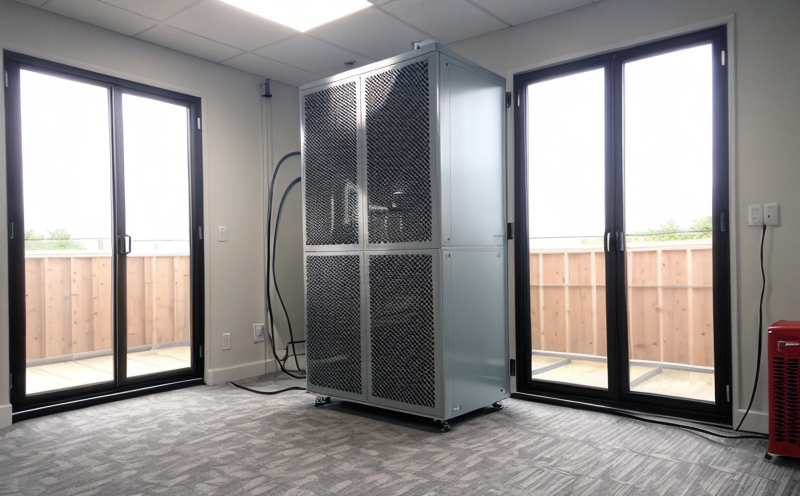ISO 14644-8 Airflow in Critical Zones Testing
The ISO 14644-8 standard provides a framework for ensuring that airflow within critical zones of HVAC systems meets the required specifications. This is particularly important for environments where air quality and ventilation are paramount, such as cleanrooms, data centers, hospitals, and laboratories.
Our laboratory specializes in performing comprehensive testing according to ISO 14644-8, which ensures that airflow parameters are accurately measured and documented. This standard covers the measurement of flow rates at various critical zones within HVAC systems, providing a standardized method for assessing ventilation effectiveness.
The testing process involves several key steps: first, we conduct a thorough site survey to identify all critical zones in your HVAC system. Next, we prepare the specimens by ensuring they are representative of the actual conditions found during normal operation. Instrumentation used includes differential pressure transducers and pitot tubes, which allow for precise measurement of airflow velocities.
Once collected, data is analyzed against ISO 14644-8 criteria to determine compliance with specified limits. Reporting involves detailed documentation including flow rate values at each critical zone, as well as any deviations from expected performance levels. Compliance reports are provided along with recommendations for improvement if necessary.
By adhering strictly to this standard, our laboratory ensures that all testing is conducted in a manner consistent with international best practices. This not only helps maintain operational efficiency but also enhances safety and comfort within the space being tested.
Why It Matters
The quality of air we breathe can significantly impact health and productivity, especially in environments where precise control over airflow is critical. Ensuring compliance with ISO 14644-8 helps maintain optimal conditions by verifying that airflow through designated areas meets specified standards.
- Health & Safety: Proper ventilation prevents the buildup of contaminants, reducing risks associated with poor air quality.
- Economic Benefits: Efficient HVAC systems lead to lower energy costs and extended equipment lifespan.
- Regulatory Compliance: Meeting industry standards is essential for avoiding penalties and ensuring long-term business viability.
In addition, regular testing according to ISO 14644-8 allows facilities managers to make informed decisions about maintenance schedules, thereby extending the useful life of HVAC equipment while maintaining peak performance.
Quality and Reliability Assurance
- Detailed Reporting: Our reports provide comprehensive insights into airflow patterns throughout your facility. This includes not just raw data but also interpretations based on industry best practices.
- Expertise & Experience: Leveraging years of experience in HVAC testing, our team applies deep knowledge to every project, ensuring accuracy and reliability.
- State-of-the-Art Equipment: Utilizing advanced instrumentation allows us to capture even the finest nuances in airflow dynamics.
Incorporating rigorous quality assurance measures into each step of our testing process guarantees that results are accurate, repeatable, and consistent. We employ stringent validation protocols for all instruments used during testing to ensure they remain calibrated correctly throughout their lifecycle.
Our commitment extends beyond just meeting current standards; we continuously monitor advancements in HVAC technology and incorporate new methodologies where applicable. This ensures our services remain cutting-edge and relevant to ever-evolving demands of the industry.
Use Cases and Application Examples
- Cleanroom Operations: Ensuring proper airflow distribution is crucial for maintaining cleanliness standards required by ISO 14644-8, which directly impacts product quality in pharmaceutical manufacturing environments.
- Data Centers: Maintaining optimal temperatures and humidity levels within data centers ensures reliable operation of sensitive electronic components. Properly controlled airflow helps prevent overheating issues that could otherwise compromise system integrity.
In both cases, adherence to ISO 14644-8 ensures not only compliance with regulatory requirements but also enhances overall operational efficiency by optimizing resource usage and minimizing downtime due to equipment failure or suboptimal performance.





